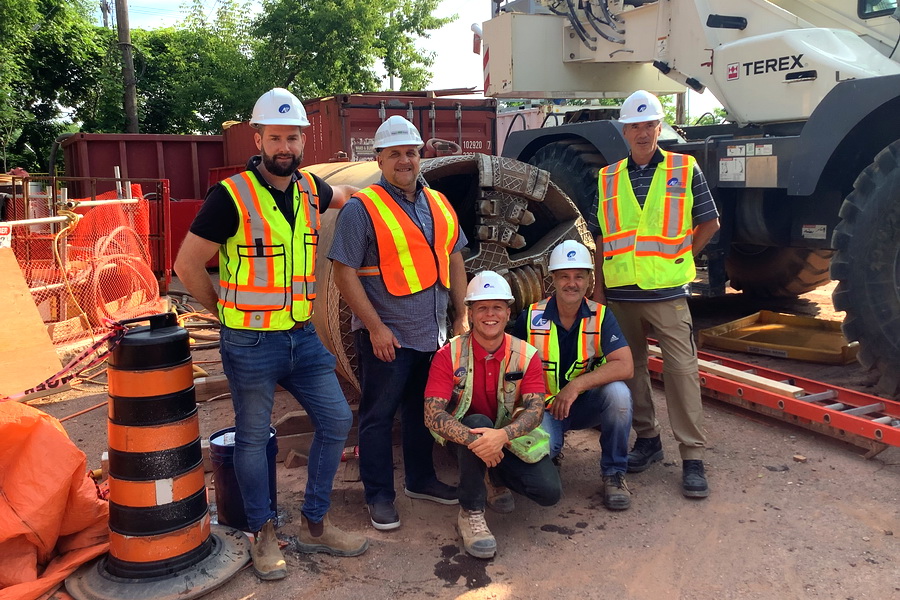Location
Kelowna, British Columbia
Expertise
Water Supply, Storage, & Distribution
Share
The Knox Mountain Reservoir is a two cell 10 ML capacity reservoir constructed circa 1930 by blasting two open basins out of the rock side hill.
The masonry rubble walls had deteriorated over time and the reservoir was operated at a reduced water level to mitigate leakage and seismic risk. Wishing to restore the original storage capacity and eliminate leakage, the City retained Associated Engineering to upgrade the reservoir. Associated Engineering developed a cost-effective solution to demolish the existing walls and replace them with cantilevered concrete walls anchored to the rock substrate. New floor slabs were cast to intercept leakage and provide a surface which is easily maintained.


Project Highlights
In a previous assignment to minimize the risk of contamination, the City retained Associated Engineering to design and supervise the construction of concrete covers for the reservoir. Associated Engineering prepared alternate designs for cast-in-place concrete and steel covers for the reservoir. Following a public tender process, the cast-in-place concrete system was chosen as the most cost-effective solution.
More Water Supply, Storage, & Distribution Projects
See all projects

Wastewater Collection & Storage
Live Online Water and Wastewater Operator Training

Pipelines
Avenue Road Watermain

Transportation
St. Andrews Lock and Dam Comprehensive Detailed Inspection

Environmental
Drinking Water System Improvements in Quaaout Community

Computational Fluid Dynamics Analysis
City of Saskatoon Reservoir and Pump Station Upgrades – CFD modelling

Energy
Solar Feasibility Study for Medicine Hat Reservoirs

Climate Change Adaptation & Mitigation
Nanaimo Reservoir No. 1 and Energy Recovery Facility

Water Treatment
Fairmont Chateau Lake Louise Water Treatment Plant Upgrades

Transportation
Glenmore Dam Utility Relocation

Infrastructure
Wildfire Infrastructure Rehabilitation Program

Environmental
McIntyre Dam Fish Passage

Computational Fluid Dynamics Analysis
Saskatoon Raw Water Intake & Pump Station

Water
Welland Water Treatment Plant

Pipelines
Zone 4 Feedermain

Electrical Instrumentation & Controls











